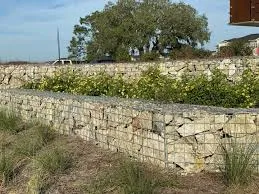-
 Phone:
Phone: -
 Email:
Email:

barbed wire
The Symbolism and Significance of Barbed Wire
Barbed wire, a seemingly simple yet profound invention, is rich in symbolism and significance in various contexts. Originally designed for agricultural purposes in the late 19th century, it has since evolved into a multifaceted emblem found in numerous societal, historical, and artistic landscapes. This article aims to explore the various dimensions of barbed wire, delving into its practical uses and its deeper meanings.
First and foremost, barbed wire was created to provide an efficient means of fencing cattle and protecting crops. Joseph Glidden, who patented the design in 1874, unknowingly launched a revolution in farming practices. Prior to its invention, farmers struggled with maintaining boundaries and managing livestock effectively. Barbed wire provided a cost-effective solution, allowing farmers to enclose their properties and secure their land. This led to increased agricultural productivity and transformed rural America. In this context, barbed wire represents progress and innovation, marking a significant shift in farming and land management practices.
However, barbed wire is not just a tool for agriculture; it has also served as a means of control and confinement throughout history. During the First and Second World Wars, it became synonymous with prison camps and battlefield fortifications. Its sharp points and unforgiving nature turned it into a deterrent against escape and invasion alike. It is often associated with the atrocities of war, particularly in the context of concentration camps, where it served as a physical barrier to freedom. In this light, barbed wire becomes a grim symbol of oppression, representing the suffering and dehumanization of countless individuals throughout history.
barbed wire

In addition to its practical uses and historical implications, barbed wire has also found its way into the realm of art and literature. Artists and writers have employed the imagery of barbed wire to convey complex emotions and themes. For instance, in many contemporary artworks, barbed wire is used as a motif to illustrate the tension between freedom and constraint. Artists may depict barbed wire as a barrier to creativity, individuality, or self-expression, often urging the viewer to reflect on the societal structures that confine them. In this artistic context, barbed wire embodies not just physical boundaries but also the psychological and emotional struggles that individuals face in a conformist society.
Furthermore, the title of ‘barbed wire’ has been metaphorically expanded to describe interpersonal relationships and social dynamics. People often use the term to signify the defensive mechanisms we construct to protect ourselves from emotional harm. Just as barbed wire can prevent intrusions on physical property, emotional barriers can serve to shield individuals from vulnerability or pain. However, just as barbed wire can ensnare and cause injury, so can emotional barricades stifle personal connections and hinder genuine relationships. Thus, the metaphorical interpretation of barbed wire provides fertile ground for discussion about human experiences, connection, and isolation.
Moreover, barbed wire has become an icon of protest and resistance. Activists and social movements have used the imagery of barbed wire to highlight issues of injustice, whether related to immigration, war, or social inequality. In visual protests, activists may use barbed wire as a powerful tool to illustrate their points, emphasizing the divisions created by socio-political structures. Similarly, it serves as a stark reminder of the barriers that exist in society and the urgent need to dismantle them.
In conclusion, barbed wire transcends its initial purpose as a simple fencing material. It has evolved into a symbol of progress, oppression, isolation, and resistance. Whether reflecting on its historical uses, its implications in art and literature, or its metaphorical meanings in interpersonal relationships, barbed wire continues to resonate with individuals across different contexts. As we engage with this multifaceted symbol, we are compelled to reflect on our own boundaries and the structures that shape our lives, urging us to consider not just the barriers that exist, but also the ways in which we might transcend them.
-
Wire Mesh for Every Need: A Practical SolutionNewsJul.25,2025
-
Steel Fences: Durable, Secure, and Stylish OptionsNewsJul.25,2025
-
Roll Top Fencing: A Smart Solution for Safety and SecurityNewsJul.25,2025
-
Cattle Farm Fencing Solutions for Maximum SecurityNewsJul.25,2025
-
Affordable Iron Binding Wire SolutionsNewsJul.25,2025
-
Affordable Galvanized Wire SolutionsNewsJul.25,2025
-
Wire Hanger Recycling IdeasNewsJul.25,2025








